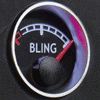An Idea I Came Up With
Announcements
-
Similar Content
-
Latest Posts
-
find it funny everyone claims different fuel chains, do different things with their fuel blah blah blah. We don't have that many fuel terminals in Australia. The fuel tanker trucks drive into the terminal, fill up, and drive directly to the service station and dump out. The majority of fuel you get, is coming out of the same terminals. The variation is actually at the individual service stations and how good their tanks are, as well as how much turn over they actually have. Older fuel stations, that haven't had their tanks replaced are going to end up with the worst fuel. Also a lot of older stations have shit design, and shit maintenance, and end up with more water absorption into the tank. This is when you then get a bad batch of fuel. Other shit things happen, like tanker drivers have a f**k up, and starting to unload the wrong compartment on their truck into the wrong tank.
-
This one?? In other news: I cannot tell the difference between my red MX5 with the silver grey hard top......... and the Ferrari 599XX EVO, they might as well be twins, well.......apart from the big wang hanging off the back of the Ferrari...🤔🤣, without the wing they are identical
-
I think you'll find we're confused about what you were trying to do and how you were doing it. I would have thought that block rigidity was something you measured while loading the block in beam or in torsion, and that you would do so before and after grout filling, to see if putting material in there created a "composite" construction with the expected rigidity increase. Notwithstanding that the true function of grout is less about gross rigidity than local (ie preventing bore deflection/splitting and tying the bores to the main bearing locations a little better, etc etc). It is nearly impossible to follow your description of what you've done without closing ones eyes and making "aliens" hand shapes in front of oneself to try to follow the manipulations you've made. It's still unclear to me what you were trying to prove.
-







Recommended Posts
Create an account or sign in to comment
You need to be a member in order to leave a comment
Create an account
Sign up for a new account in our community. It's easy!
Register a new accountSign in
Already have an account? Sign in here.
Sign In Now